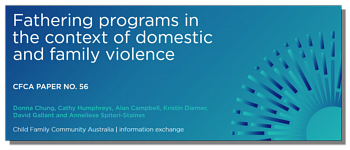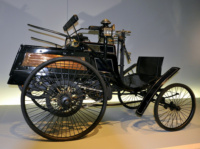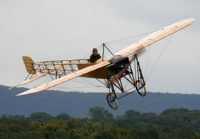Men’s Articles
[ Shining the light on a Men’s Health & Family Network ]
…
Men’s Articles. International items of interest, network articles, support references and other generic issues impacting men globally. Includes some historical interests.
[ Home page ]
A Quote:
“Better to be a nobody and yet have a servant – than pretend to be somebody and have no food“.
“Behind every good man is a good woman”… whether its a Partner, Wife, Mother, Grandmother, Boss…
“Men don’t talk face-to-face, they talk shoulder-to-shoulder” [ Men’s Shed Motto ]
Network Article Links:
Men’s Health Australia Articles
…///…
![]()
Men’s International Articles:
- Changes in family life.
- 20 songs about Dad’s
- Fathering Programs within DFV
- Me Myself & I, Help!
- Men reluctant to wear a mask
- The Duluth Model
- Dad’s boost babies brains
- MRI scans for Prostate Cancer
- Men with body image issues
- Three things Men are discouraged from
- Man made Topics
[ Note: views expressed should not be considered synonymous with the Men’s Elective Network. ]
…///…
…///…
Changes in family life.
A German study of the transitional roles of parenthood from say 50 years ago…
The mother looks after the children, the father works full time, these traditional roles stubbornly remained the norm for a long time. But in recent decades, the normative expectations of mothers and fathers have changed. Motherhood is no longer seen as an obligatory part of female identity and fulfillment. It is no longer automatically expected that mothers will give up paid work, and it is becoming increasingly normal for fathers to have a more active role in raising and caring for children.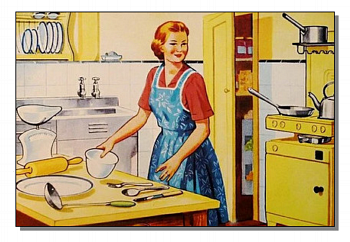
Discrepancy between public discourse and empirical data…
Together with sociologists from Germany, researchers at the University of Zurich (UZH) have now investigated what effect these changed societal expectations have had on the life satisfaction of mothers and fathers. For their empirical work, they evaluated data from the long-term study of the Socio-Economic Panel at the Institute for Economic Research Berlin (DIW), which are representative for Germany. It contains data on more than 18,000 women and almost 12,000 men who were surveyed between 1984 and 2015. “While in the last few years the prevailing message in the media is that modern parents are under great stress or even regret having become parents, our analysis shows the opposite,” says first author Klaus Preisner from the UZH Institute of Sociology
In surveys in the 1980s, most mothers were less satisfied with their lives than women without children. The idea of having a “little bundle of joy” that would bring great happiness — which stemmed in part from the taboo against speaking negatively of motherhood in any way — did not translate to reality for many women. “With the increasing freedom to choose whether or not to have a child and to shape parenthood more individually, the ‘maternal happiness gap’ has closed. Today we no longer find a difference in the life satisfaction of mothers and of women without children,” says Preisner.
Life satisfaction of both parents increased…
 The picture is different for men: In the past, in contrast to women, men were not expected to take an active role in childcare, to take parental leave or to reduce their working hours after having children. Although that situation is different today, the life satisfaction of men has barely changed as a result. What’s more, there is no difference in life satisfaction between fathers and men without children. “Fathers who step up to meet the new expectations placed on them are increasingly rewarded with public praise for their commitment,” adds Preisner.
The picture is different for men: In the past, in contrast to women, men were not expected to take an active role in childcare, to take parental leave or to reduce their working hours after having children. Although that situation is different today, the life satisfaction of men has barely changed as a result. What’s more, there is no difference in life satisfaction between fathers and men without children. “Fathers who step up to meet the new expectations placed on them are increasingly rewarded with public praise for their commitment,” adds Preisner.
Alongside changed normative expectations in Germany, new political measures have been introduced, such as support for parental leave after the birth of a child and childcare for small children outside the family. One the one hand, such changes mean mothers and fathers can choose more freely how they want to arrange their family lives with regard to childcare. On the other, the roles and responsibilities are more equally distributed between mothers and fathers nowadays. Both these aspects have a positive effect on parents’ life satisfaction.

Parents and children benefit from modern policy measures…
The greater freedom of choice and the increased equality of mothers’ and fathers’ roles has been encouraged and in some cases even made possible at all by modern policies for families. Parental leave enables mothers and fathers to share childcare responsibilities and to be involved in their children’s upbringing. In addition, subsidized childcare outside the home, such as it exists in Germany, also makes it easier for families to combine parenthood and employment. Klaus Preisner also sees another advantage: “These family-friendly political measures are not only significant for equality between the sexes. They are just as important for their role in improving life satisfaction of parents and thus ultimately of children.”
Summary:
Increased equality has a positive effect on mothers and fathers. Thanks to greater freedom to strike an individual balance between caring for children and working in paid employment, mothers and fathers today are happier with their lives than parents were 20 or 30 years ago, a study by sociologists has shown.
[ Source – Science daily ]
…///…
…///…
20 songs about Dad’s
Country songs about Dad share a common thread. Take a look at Great American Country’s Top 20 country songs that convey a prevailing truth. Becoming a father isn’t necessarily difficult. But being a good dad – well, that is a challenge.
Parenthood is rally not that different for Americans than any other country and songwriters have been scripting songs about Fathers for years… lets run through some of the best songs that deal with “our dads”.
Some of your favourites might be missing, for example, the Mac Davis song “Watching Scotty Grow” or “I Saw God Today” is a better fatherly entry from George Strait than “The Best Day” but that’s what the following list is for, starting the conversation…
20 great songs about Dad’s AND keep scrolling to see the 20 great songs about Mothers.
…///…
…///…
Fathering Programs within DFV
Domestic Family violence (DFV) is presented through Fathering Programs… the following refers to Australia even though the document has significant outside international information in the report makeup.
In point, one of the programs referred to is the Caring Dads program in Australia even though the DFV program based in the UK & Canada, and presumably other major countries around the world. DFV as a matter of interest have their own trademark.
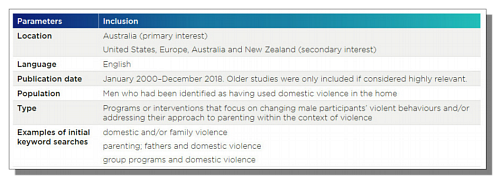
To quote from the AIFS – Australian institute of family studies:
This paper examines how men’s behaviour change programs, domestic and family violence specific fathering programs, and Aboriginal men’s healing programs address fathering issues for men who use violence. It presents findings from a scoping review of Australian and international literature to highlight similarities, differences and gaps in programs and explores how these programs could be more inclusive of fathering in the context of domestic and family violence. [ Image link below to the AIFS website].
The following is a summary of the paper from the AIFS PDF document…
[ This paper is intended to provide the basis for a research-informed conversation among policy makers and practitioners about next steps in developing this area of perpetrator intervention. The results of this review indicate the need for greater development and testing of interventions ranging from how fathering capacity and safety is conceptualised and assessed by practitioners both in specific DFV perpetrator programs and mainstream programs for men as fathers, through to what responses could be developed and how they could be implemented within programs and the wider service system.
The evidence base of practice effectiveness is limited and, in most programs, the perspective of children is minimal and can be ethically complicated with legal, safety and consent concerns when involving children where DFV has been or is a feature of their lives. This highlights the need for better program design and implementation, particularly focusing on the effects of violence on children and the diminishing of the effectiveness of fathering when a father is violent.
There is also a need for programs to be more contextualised and holistic. The most holistic approaches are within Aboriginal men’s healing programs that are grounded in family as integral to men’s identity and positive mental health, while not discounting the importance of accountability to those who are victims of men’s violence.]
CFCA image link below:
…///…
…///…
ME MYSELF & I, HELP!
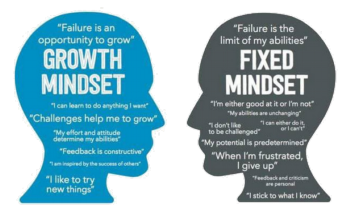
Sometimes the best form of help is self help… that is not to say we should not exclude professionals when life becomes all too much but if we are aware that something is “not quite right” then this in itself would (in simple terms) indicate that we are conscious of our thought patterns sufficient to see the issue before it gets out of control – our thoughts, the way we normally do things, remembering people, places, appointments… apart from simply just being human and doing something out of the norm “because you can – or need to” is a healthy position.
Below are some following ideas that have been collated from a number of people over a period of time that might be of some use…
Part one:
Pending considerations…
- Think about the facts; Objective, goal, other People.
- To whom does the “problem” belong?
- Be Committed to the issue; aim for a Specific direction.
- Talk to wise people; Specialists, Friends, Leaders… remain open.
- Be aware of your mind’s direction – fear can be a protector!
- Move in the direction that appears right… confirm?
- Use any tools and Assistance available… with confidence.
(Moving in small directions is the best preparation for succeeding in the bigger picture!)
Part Two:
The Four Stabilizing Questions…
Be Definite – What exactly am I troubled about?
Be Rational – Is it certain, possible, or only probable?
Be Wise – How Important is it & to whom?
Be Practical – What can I do about it, if anything?
A Thought “If it doesn’t matter in ten years time – it just doesn’t matter!”
Part Three:
Character Guide; – (Feeling the pressure?)
- DON’T be weakened by your circumstances,
- DON’T be deceived in the situation,
- DON’T be gentle on your Emotions,
- DON’T be confused with the immediate consequences.
Part Four:
Emotional Perspective…
I’m OK – Your OK
I’m Not OK – You’re OK
I’m Not OK – Your Not OK
I’m OK – Your Not OK
Part Five:
D.E.S.C.C.O.E.
DESCRIBE; the situation, be a solution / not the problem;
EXPRESS how you feel, what the effects are;
SPECIFY the behaviour your trying to convey;
CONSEQUENCES come from seeking change;
CONTRACTS can be a possible outcome;
OPEN your Heart & Mind to try and see from the “other” side;
EXCEPTION to the Rule – Fob the Situation.
Part Six:
Be yourself, don’t compare, your thoughts are only from you – they are not you!
…///…
Men reluctant to wear a mask

The stats are indicating that men (males) are more susceptible to a virus than women. Some men may consider wearing a mask as not cool or a sign of weakness and quite possibly a stand against a religious habit (pun) that only women participate in.
It does seem evident that more women are wearing masks than men, NOT because of any religious grounds but that they simply don’t have a problem with it – sadly though more men are actually dying of the virus than women – maybe its because they aren’t wearing the mask?
A gender divide is now also being observed during the virus pandemic… that even though more men are passing away with Covid-19, most still refuse to wear a mask. Interestingly this is consistent with previous pandemics.
That said, it has taken quite a number of years for men to realise the value in wearing personal protective equipment… like in the work place, a trend that is now thankfully well into the past – except for the odd male “counterpart”.
Why the issue anyway, its only a mask? There are no doubts to a number of reasons… Which highlights the point about jurisdictions across all Authorities, some countries/states are not in line with the W.H.O. which initially suggested masks were NOT required to wear all the time in stopping the virus…. which may now have changed, here again another “rule-of-contention” AND a good point, no matter who (pun included) you are.
One other fact is that men ( in general) are NOT renowned as the best at personal hygiene…. like washing hands regularly, even after going to the toilet!!!
Does this “male position” then mean that men are overconfident around a pandemic – unlikely in general but some would be!
Men are more prone to be “risk takers” than women ( check your insurance premium), or maybe its the known point that some men are simply just plain stubborn.
In closing, is this related to the old saying “You can lead a horse to water but you can’t make him drink” and yet one of the very ingrained aspects of a man is his desire in loyalty…. whether its to his family, Faith, employer, country or more broadly… his mates. On a side note – at the end of the day there are actually a lot of men who wear a “mask” all the time anyway… but to the average person, you just would not know it!!!
[ B.D. Bennett ]
…///…
The Duluth Model
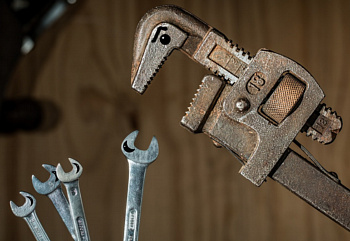
One answer to Domestic violence…
From the early 1980s, in a town called Duluth—in a small community in northern Minnesota—there has been an innovator of ways to hold batterers accountable and keep victims safe that has been applied to the namesake of the town towards an ever evolving way of thinking about how a community works together to end domestic violence.
Communities that use the Duluth Model approach:
This has taken the blame off the victim and placed the accountability for abuse on the offender creating a shared policy and procedure for holding offenders accountable and keeping the victims safe with agencies in the criminal and civil justice systems and during the court processes. It prioritizes the experiences of only women who have experienced battering in the creation of those policies and procedures. There is also a belief that battering is a pattern of actions used to intentionally control and/or dominate an intimate partner by men’s use of tactics of power and control over women. The outcome expects change for offenders through court-ordered educational groups of men who are “batterers”.
During which all of these ongoing discussions between criminal and civil justice agencies, community members and victims it works to close the gaps and improve the community’s response to battering.
Some of the arguments by Bert H. Hoff – battered-men.com against the model are:
> It’s about blaming and shaming men, more than giving them the insights and support to help them stop their abusive behavior.
> It ignores drinking, drugs, Borderline Personality Disorder and other serious psychological problems.
> It says there is only one cause for domestic violence, and only one solution.
> There’s no real evidence it works.
> It ignores domestic violence by women.
> It’s a gender-polarizing approach that only serves to perpetrate the “battle of the sexes.”
The treatment programs around the world are adopting the “Duluth model,” as the widespread of the male-patriarchy batterers’ programs, with training programs in hundreds of cities across the USA and a recent series of Marine Corps contracts. It promotes a gender-polarizing view that battering is a conscious strategy by men to assert male dominance over women.
The Duluth Model preaches that men don’t have a personal problem, but are simply reflecting “a culture that teaches men to dominate.” John Everingham, co-author of Men Healing Shame and a professor at the University of Illinois at Chicago, calls this “shame of male for being male.”
Promotion of the Model:
Out of 25 international nominations, the “Duluth Model” was the only policy to be awarded the 2014 Future Policy Award for Ending Violence against Women and Girls. It is the only international award which recognizes policies over people, and the “Duluth Model” is the first humanitarian policy to be honored in the history of the award.
Duluth Family Visitation Center (DFVC) works to restore safety and repair harm in the lives of women and children after abuse. The DFVC supervises visits and exchanges with the child and the parent responsible for the abuse. thier focus is to build safe and positive relationships.
With the initial setup over several months, we convened groups of women who were battered. We listened to their heart-wrenching stories including survival. We asked questions, documented the most common abusive behaviors and tactics that were used by men against these women.
Why the Duluth Model Works…
The Duluth Model is successful because it is grounded in the experience of victims, helps offenders and society change, and pulls the whole community together to respond.
Research has found that by applying all the components of the Duluth Model, 68% of offenders who move through Duluth’s criminal justice system and men’s nonviolence classes do not re-offend and stay clear of the system. Communities worldwide that have adopted components of the Duluth Model have also found significant reductions in re-offense rates.
You can read further from the Duluth Model website.
…///…
Dad’s boost babies brains

Babies learn faster if their Fathers engage with them, a study suggests. It found that infants with more remote fathers tended to be slower at recognising colours and objects. The study, by researchers at imperial college London and Oxford University, is one of a few to examine the impact of men, rather than women, on a child’s development. The results suggest it is hugely important that men speak to a child in a positive tone of voice, pay attention to what interests them and elaborate on their speech.
One other point that’s been revealed…. is that Dad’s (in fact both Parents actually), should NEVER yell at their kids, its demeaning and controlling, it signals that a Parent has not only lost “control” of a situation but also indicates that a Person is not in control of themselves…. culminating in a child’s perspective to also loose control.
[ Source: Australian Heraldsun – thursday,11 may 2017 ]

…///…
MRI scans for Prostate Cancer
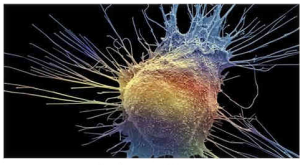
A blood test has been developed that could help target treatment for men with advanced prostate cancer. Cancer researchers in Europe analysed blood from 265 men with the disease. They found those with multiple copies of a particular gene did not respond to abiraterone and enzalutamide – drugs commonly used to treat advanced cases. More trials are needed but the team hope the test could prevent thousands of men undergoing unnecessary treatment and allow more personalised care. The drugs abiraterone and enzalutamide are given to a man whose cancer is no longer responding to traditional hormone therapy and has started to spread. Costing less than £50, the test is a quick and relatively cheap way of preventing men from undergoing the side effects of therapy that will fail.
“But in other men, these drugs do not work well and the disease rapidly returns. Currently, there is no approved test to help doctors choose whether these are the best treatments for an individual. “We have developed a robust test that can be used in the clinic to pick out which men with advanced prostate cancer are likely to respond to abiraterone and enzalutamide, and which men might need alternative treatments.” For the study, published in the journal Annals of Oncology, scientists took blood samples from patients taking part in three different clinical trials. Dr Iain Frame, director of research at Prostate Cancer UK, said the test could be a significant step towards moving away from a “one-size-fits-all” approach to treatment. About 46,000 men are diagnosed with prostate cancer in the UK every year, one in four of them at an advanced stage.
There are many other countries doing research in this field… such as South Africa and it’s wonderfully encouraging when one considers research in high population countries such as India.
…///…
Men with body image issues
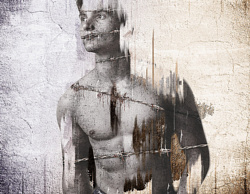
Superheroes today are a lot more shredded than they used to be. The original Superman and Batman look almost willowy compared to our muscle-bursting modern-day versions.
That’s no coincidence. America is in the midst of a cultural shift in terms of the ideal male body image, and as the ideal man grows more muscular, men stuck in the real world with real bodies are growing less satisfied with theirs – with potentially dangerous medical consequences. If you think about the changes over the last 30 to 45 years in how men are depicted in Hollywood, cartoons, magazines and action toys, you’ll see that men’s bodies [today] appear much more muscular,” says Dr. Harrison Pope, director of the Biological Psychiatry Laboratory at McLean Hospital in Massachusetts. These unrealistic media images have contributed to low body image satisfaction among men—usually just considered a problem for women. A study last year found that American men are just as likely as women to feel unsatisfied with their physiques, while another study found adolescent boys who are dissatisfied with their body shape may be more likely than girls to self-criticize and feel distress. Studies have even shown that men feel worse about their bodies after playing video games with ripped characters.
“There’s this drumbeat that muscularity equals masculinity, and so we’re seeing more and more young men with muscle dysmorphia,” says Pope. The consequences of this kind of thinking can be dangerous. As more and more men hit the gym in the hopes of transforming themselves into the Rock, many are also turning to anabolic steroids to achieve the muscle mass they associate with masculinity. Up to 4 million Americans—nearly all of them male—have tried steroids at some point, according to Pope’s recent research.
“There’s a widespread misperception that anabolic steroid use is an issue of cheating in sports, but the vast majority of anabolic steroid users in this country are not athletes,” says Shalender Bhasin, a men’s health researcher at Brigham and Women’s Hospital and Pope’s co-author on a new article in the Journal of the Ameri-can Medical Association. “Most young men using these drugs are doing it to improve their appearance.”
The potential side effects of anabolic steroids include premature death and neurobehavioral disturbances, like problems with thinking and attention. But Pope says the links to heart problems are the most worrying. “There’s a growing body of literature that suggests long-term steroid use can cause cardio myopathy, where the heart doesn’t pump or fill with blood efficiently.” That could lead to heart attack or stroke, he says.
It’s not yet clear just how significant these heart risks are, because steroid use is a relatively new phenomenon. Pope says few men used them before the 1980s, and those early adopters are just now hitting their 50s and 60s—ages when heart problems take their toll.
Few doctors or psychologists realize how common steroid use and abuse has become, say Pope and Bhasin, and almost none are trained to treat steroid addiction or dependence. Men taking steroids who want to quit there-fore have few professional resources, which may lead many to go back on steroids or try other substances—like cocaine or opioids—in order to feel better, Bhasin says.
“Until we see greater awareness of this problem and more attention paid to treating it,” Pope says, “most of these men are on their own.”
Source: Markham Heid @markhamh
Article reference: emale magazine, Editor Greg Millan, M: 0417772390
…///…
Three things Men are discouraged from
Jordan Gray is a Consultant, he says that the absence of three important things in the lives of men is exhausting, damaging, and potentially fatal. Men are limited in many ways in terms of what is culturally encouraged for them to do. Of the myriad of things that are ‘off-limits’ in guy world, the following three are by far the biggest culprits. Do any one of these too often and people will make jokes about how you have to hand in your ‘man-card.’ In truth, these three things are necessary for a well-rounded, fulfilling life. Without further ado, here are the three most important things that men are discouraged from doing…
1. Feeling emotions
Let’s get the most obvious one out of the way… Men are discouraged from feeling emotions.
And not just the societally reinforced ‘negative’ emotions (like sadness, grief, jealousy, frustration, etc.) but also the most positive ones (i.e. being overly joyful, ecstatic, or expressively happy is also looked down upon in man world). The more we suppress our emotions, the more we suffer. Out of any of the three factors on this list, I believe that this one is by far the biggest reason that suicide rates among men are drastically higher than women world wide. Women are encouraged to feel a wide range of emotions, and men simply are not. Whether you do it alone, with close friends, or with your significant other, regularly releasing your stored negative emotions and being more emotionally authentic moment to moment will save you a lot of stress, tension, and misery in the long run.
2. Being physically affectionate with their male friends
Men are also discouraged from engaging in any form of touch with their male friends outside of very specific activities (mainly team sports). We are not robots. Humans are a social species and we are hardwired for connection and physical affection. And your body doesn’t only respond to the opposite sex… it also releases happy brain chemicals (oxytocin, dopamine, serotonin, etc.) when you engage in touch with men who you feel close to. Hug your guy friends hello and goodbye. Put your arms around each other for your photo ops. Heck, you can sit side by side or put your heads on each others shoulder while you’re watching Netflix. The sky’s the limit (well, your comfort zone is, but you get my point). More touch, more often. You’ll be physically, mentally, and emotionally healthier for it, and you will improve your relationships with men. Really sit with this point. If you find yourself strongly resisting what you’re reading right now, that’s usually a sign that a part of you really craves more physical affection in your life with the people around you.
3. Engaging in regular self-care
“Spa visits? Regular massages? EXFOLIATING!? The only exfoliation my grandpa did was when he once accidentally dropped a power sander on his foot. Just kidding, my grandpa never made mistakes.” Yes, it’s true. Men are allowed to engage in regular self-care. We live in stressful times. Cities with millions of people packed into them… incessant dinging, buzzing, and beeping from our tech devices… being increasingly on-call around the clock for our jobs. If men don’t take the time to slow down and take care of themselves every now and then, then they’re going to burn out. Maybe you get a massage every now and then. Whatever your self-care routine looks like, make it a priority. You’re allowed to.
Which Of These Three Resonates The Most With You?
Which of these three points makes you the most uncomfortable? Well, congrats, you’ve just signed up to start chipping away at it. Pick the most challenging task and start small. Haven’t felt any big emotions lately? Try feeling joyful. Not prone to being physically affectionate with your guy friends? Give one of your closest guy friends a hug within the next week.
Not used to prioritizing self-care in your schedule? Time to bust out that calendar and do something purely selfish… just for yourself. You’ll be better off for it.
Source: JordanGrayConsulting.com
Article reference: emale magazine, Editor Greg Millan, M: 0417772390
…///…
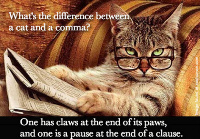
…///…
Man made Topics
![]() – World’s oldest working steam Locomotive:
– World’s oldest working steam Locomotive:
The Indian Railways still has the oldest preserved locomotive in working order, the Fairy Queen which was made way back in 1855, It finds a place in the Guinness Book of World Records and received a Heritage Award at the International Tourist Bureau in Berlin – March 2000.
…///…
![]() – World’s oldest running car:
– World’s oldest running car:
an 1884 De Dion Bouton Et Trapardoux Dos-A-Dos Steam Runabout, made history, fetching $4.62 million at RM Auctions’ Hershey, Pennsylvania event before a packed house, the 127-year-old ride quickly eclipsed its $500,000 starting bid. By the time the dust had settled, the gavel fell at $4.2 million. The Runabout had been in the same family for 81 years prior to the sale, and is one of six De Dion tricycles known to still exist. A total of 20 of the three-wheelers were built. When new, the trike had a top speed of 38 mph and a range of 20 miles on one tank of water. The vehicle that sold last night was the only car to show for the world’s first auto race, it averaged 16 mph over a 20-mile course.
…///…
![]() – Worlds oldest Aircraft:
– Worlds oldest Aircraft:
The Blériot XI was used by Louis Blériot to make the first flight across the English Channel in a heavier-than-air aircraft, on 25 July 1909. One of the most famous accomplishments of the pioneer era of aviation, and not only won Blériot a lasting place in history but also assured the future of his aircraft manufacturing business, causing a major reappraisal of the importance of aviation. It was produced in both single- and two-seat versions, powered by a number of different engines, and was widely used for competition and training purposes. Two restored examples — one in the United Kingdom and one in the United States — of original Blériot XI aircraft are thought to be the two oldest flyable aircraft in the world.
…///…
![]() – Worlds oldest Ship:
– Worlds oldest Ship:
The Khufu ship is an intact full-size vessel from Ancient Egypt that was sealed into a pit in the Giza pyramid complex at the foot of the Great Pyramid of Giza around 2500 BC. The ship now is preserved in the Giza Solar boat museum. The ship was almost certainly built for Khufu (King Cheops), the second pharaoh of the Fourth Dynasty of the Old Kingdom of Egypt. Like other buried Ancient Egyptian ships, it was apparently part of the extensive grave goods intended for use in the afterlife, and contained no bodies, unlike northern European ship burials.
…///…
![]()
Support-for-Men
For some Men, loving themselves is a big enough challenge in life let alone loving others… feeling like a dull unsharpened axe where more strength is needed to combat some of the heavy schedules we have in our lives today. All due to a myriad of reasons that can effect positions in Family Life, Relationships, Work, Spiritual and even Leisure.
The Statistics on men’s health & general well-being are undulating further & further to extremes (depending on the source). Many Professionals and Family members continue to highlight areas that appear paramount from time to time, so to culminate in assisting, the Men’s Elective Network desires to enhance men’s growth (both individually & Collectively) through corroboration via M.E.N. Support, Referral, Health & Connecting to point men in the right direction to Ask, Seek & Knock…
Mateship:
Men in general work hard, play hard and have great expectations of themselves – and others, in their quest to find contentment in everything they do. In addition to the responsibilities of family & working Life most Blokes need an outlet with Sport probably being at the top. For some, simply watching “their Team” or “favourite player” is sufficient but for others it involves more of a hands-on approach – from recreational fishing or golf to an extreme high risk high impact activity that may involve either strength, speed or Height, the Ultimate of course is all three!
Other forms may have a more Social nature… even nature itself! Another more prominent activity is construction – or preservation… Buildings, Planes, Trains and Automobiles – Model or Full scale, Music too is often “instrumental” as an outlet in all its expressive forms. As water reflects the face, so ones life reflects the heart… as iron sharpens iron so one person sharpens another – all this and more, together portray the amazing skills that Men display in their quest for success in life.
…///…
Mission Statement:
Shining the light on Men’s Health via the Men’s Elective Network… with Resource Directories for help & contentment in life.


